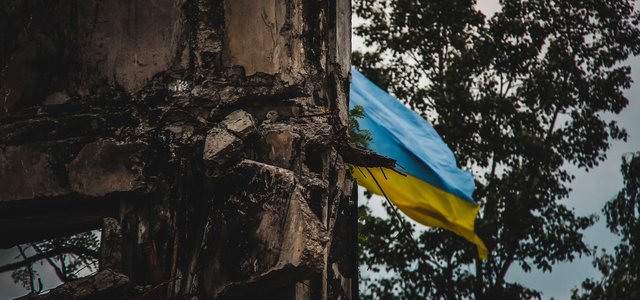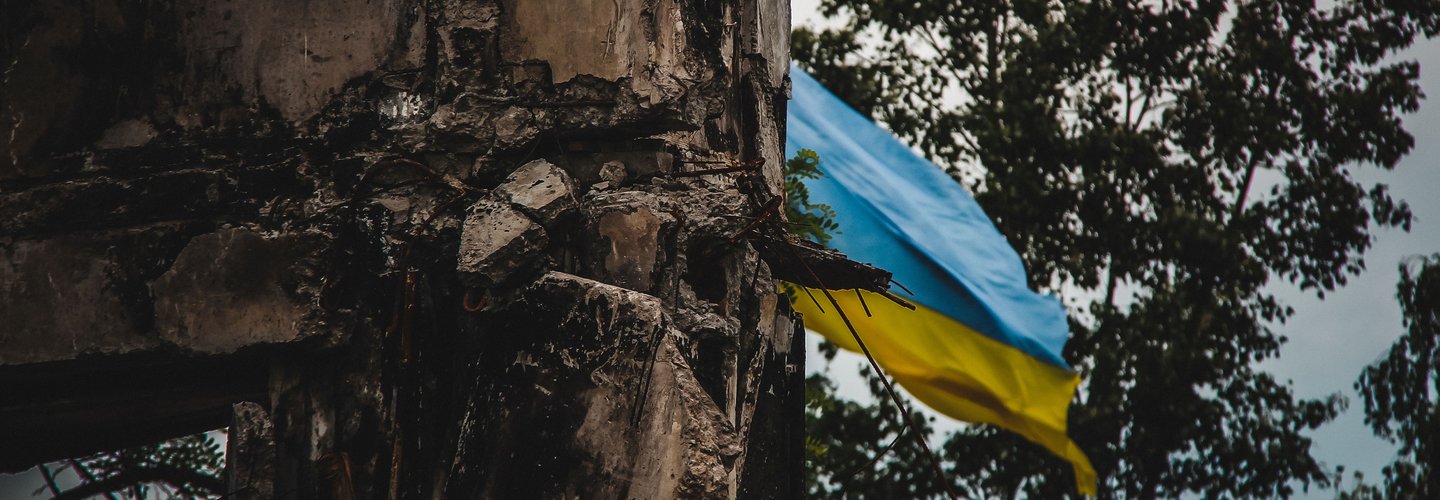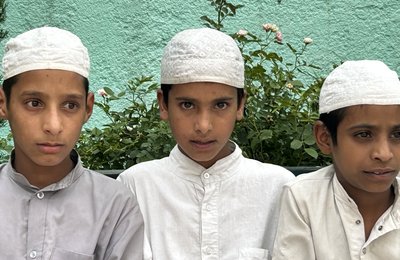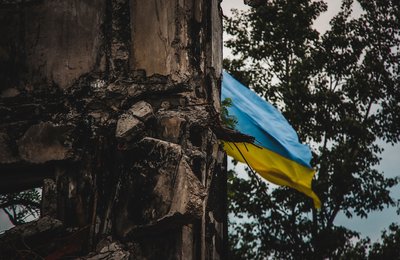US funding cuts hit peacebuilding initiatives in Ukraine
Following the funding freeze by the US in January 2025, the Ukrainian civil-society sector was deeply shocked. Ukraine has been among the top recipients of US foreign assistance since 2022, with support being given to the country’s humanitarian, development, and government sectors.
The suspension of funding in January 2025 has ‘severely impacted’ provision of humanitarian services by Civil Society Organisations (CSOs) in Ukraine, with programmes relating to WASH (Water, Sanitation & Hygiene), food, health, and education programmes reduced by one-third on average. The humanitarian data initiative REACH reports that ‘key oblasts such as Khersonska, Kharkivska, and Odeska are most affected, putting vulnerable populations at increased risk’.
USAID had a presence in Ukraine since 1992 and since Russia’s full scale invasion, it increased its financial support to roughly $130 billion, this includes military, direct funding and humanitarian aid.
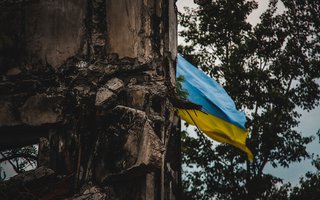
These funds supported a range of sectors, including humanitarian support, development of democracy, human rights and governance, healthcare, education and peace and security. ACAPS reports US funding covered around 30% of Ukraine’s coordinated humanitarian funding plans in 2022, 2023 and 2024, while the rest was funded by the EU Council, the EU Commission and other donors.
Ukrainian civil society organisations were not prepared for the sudden and complete discontinuation of US financial aid, putting at risk their projects, humanitarian assistance and creating critical gaps in service provision.
These humanitarian programmes had kept people safe, while development assistance supported Ukraine’s civil society and independent media. Since 2014, CSOs have been crucial and valuable in providing rapid humanitarian assistance to war-affected populations in hard-to-reach places where international donors would not reach because of security risks. Ukrainian CSOs have not only provided humanitarian assistance and psychosocial support, but also contributed to economic development, the creation of employment opportunities, and the reintegration of war veterans to society. They have also been helping to promote social cohesion and build resilience among the population.
The impact cuts to US foreign assistance means that affected communities are at risk of having their basic needs unmet. This threatens both the immediate humanitarian outcomes and the longer-term safety and wellbeing of millions of Ukrainians. As a result of this dramatic change, nearly one-third of CSOs have reduced their workforce, with 85% of affected organisations expected to lay off 34% of employees on average (according to REACH).
Organisations with various sources of funding have been able to navigate these difficult times more easily than oirganisations who rely on a single source of funding. Some of them, however, were still forced to pause or shut down some humanitarian and other projects, to stop engaging with new beneficiaries or give up the offices to get through this turbulent time. Unlike CSOs with a diverse range of funding, those with a singledonor were heavily impacted, often having to continue operating on a voluntary basis. Many of them are at risk of closure. Competition for limited donor resources has increased, putting small CSOs in hardship.
This challenging time has pushed CSOs to become more flexible and creative in developing new partnerships and methods of fundraising. In this light, Ukrainian civil society organisations have knocked on all the doors to find plausible sources of funding. Where the doors were closed, they looked through the windows.
To continue their work and mitigate the impact, most CSOs have been fundraising from the private sector, from international donors, and from Ukrainians, among other sources. For example, the media platform ШоТам? (Scho tam), which received 50% of its funding from the US, has had to give up their office and reduced their staff, while launching a public appeal to collect funding. US-funded projects have been paused until alternative donors are found, while projects with other donors continue. But some donors are resistant to reinvigorating US-funded work.
“European donors are skeptical of ex-US-funded projects and are asking us to propose new projects. They ask, why we are giving them old projects to fund after USAID? Also, there are not many thematic areas where ex-USAID-funded projects would fit them”, says Serhii Kolesnykov co-founder of the positive news media platform ШоТам?
Dostupno.ua which promotes accessibility for people with disability, stopped some of the key projects such as developing strategic documents on accessibility for communities, consultations and trainings for the National Railway Network Ukrzalyznytsa to support people with disabilities, including during the evacuation. The organisation appealed for emergency funding from businesses and the Ukrainian public shortly after the cut of US funding.
In some cases, the financial gaps caused by the withdrawal of US aid were filled by the local government. The Veteran Hub organisation was forced to temporarily close its centre in Vinnitsa and its telephone hotline that supports war veterans. Since 2020, this hub has been providing legal and psychological support to veterans and their families, as well as assistance with educational opportunities and employment. However, the hub reopened shortly afterwards and continues to operate thanks to funding from the local hromada budget.
The free National Psychological Association’s psychological support hotline, created in 2022, has had different donors but from January 2025 it was supposed to be funded only by USAID. Despite all the difficulties, after a 3-months pause, the hotline won funding from the Estonian Refugee Council, national donors and the UN to continue its operations.
Meanwhile, La Strada’s flagship psychological support hotline, which has received almost 168 000 calls for help, is at risk of closure. The reason for this is the fact that non-US international donors also face financial constraints and have to prioritise funding allocation. Like La Strada, many organisations worked under the shelling, during the blackout, found the solutions when the Internet was down, but are now unable to survive this lack of funding.
The main lesson that the Ukrainian CSOs learnt from this situation is to diversify the sources of funding and to have backup funds for the projects by engaging with various donors, local businesses, crowdfunding, and collecting donations. This means that if one source of funding is lost, organisations can still operate thanks to the other available funds.
“We have learnt our lesson, now we have 3 sources of funding”, says Valeriia Palii, Vice President of the National Psychological Association.
The situation is not yet critical. Europe and other donors continue providing support to Ukraine. It is hard to evaluate now the full impact of the funding cuts as some gaps were filled with temporary urgent solutions, but not necessarily sustainable ones.
Meanwhile, assistance from Europe is also declining, falling from 6.2 billion euros in 2022 to 4.1 billion euros in 2023 and a projected 3 billion euros in 2024, according to the Ukrainian Support Tracker at the Kiel Institute think-tank. With instability of international donors’ support, including the EU, CSOs will be forced to ensure sustainability by finding solutions locally. Some organisations are also considering developing business models by providing paid consultations, training and other activities to redirect funds for the CSO’s principal activities.
Despite the negative consequences of the funding cuts, the civil society sector remains resilient and responsive. It has grown stronger and found its way. Not all US-funded CSOs have survived, but most of them have the chance of a future.
Now is the time for local activists and organisations with the financial support of the EU and other donors to play a leading role in bringing stability in Ukraine and reinforcing resilience of Ukrainians, while preparing a sound ground for resilient communities and lasting peace in the future.

